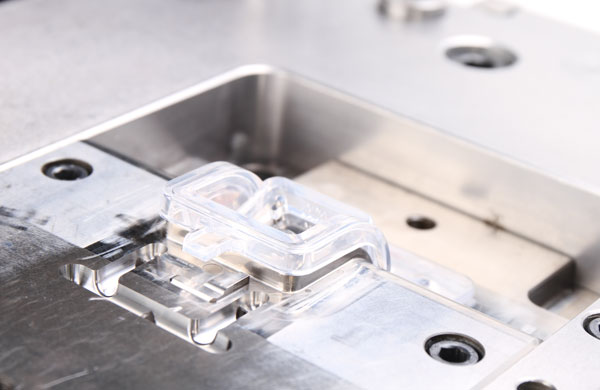In the realm of injection molding, the issue of top whitening stands out as an unsightly flaw that not only affects the product's aesthetic appeal but also weakens its chemical resistance and mechanical properties. This article delves deeply into the causes of top whitening and provides a series of effective solutions.
Causes of Top Whitening:
Improper Ejector Pin Placement: When ejector pins are positioned directly on the weak areas of the molded part, they exacerbate the occurrence of top whitening, leaving undesirable white marks on the product's surface.
Rough Cavity Surface: A rough cavity surface increases the resistance during demolding, leading to excessive local pressure during ejection and inducing top whitening.
Limited Contact Area of Ejector Pins: The small contact area between ejector pins and the molded part results in concentrated local forces, thereby triggering top whitening issues.
Significant Temperature Difference: A large temperature difference between the melt and the mold can generate significant residual stresses within the molded part, making it prone to top whitening when subjected to local forces.
Insufficient Cooling Time: Inadequate cooling time prevents the internal stresses of the molded part from balancing fully, resulting in top whitening when local forces are applied.
Excessive Injection Pressure: High injection pressure also leads to increased residual stresses in the molded part, contributing to the occurrence of top whitening.

Solutions to Top Whitening:
Optimize Ejector Pin Placement: Strategically position the ejector pins on the thicker sections of the molded part to effectively reduce the pressure during ejection and minimize the occurrence of top whitening.
Enhance Cavity Smoothness: By reducing the roughness of the cavity surface, the resistance during demolding can be significantly decreased, thereby mitigating top whitening.
Increase the Cross-Sectional Area of Ejector Pin Ends: Appropriately increasing the cross-sectional area of ejector pin ends can distribute the local forces on the molded part more evenly, reducing the risk of top whitening.
Adjust Melt Temperature: Reasonably lowering the melt temperature to minimize the temperature difference between the melt and the mold helps reduce the generation of residual stresses and, consequently, the occurrence of top whitening.
Extend Cooling Time: When the cooling time is insufficient, it should be appropriately extended to ensure that the internal stresses of the molded part are fully balanced, thereby decreasing the likelihood of top whitening.
Adjust Injection Pressure and Holding Time: In cases of excessive injection pressure, the holding time should be shortened to avoid excessive accumulation of residual stresses in the molded part, thereby reducing the occurrence of top whitening.
Through this thorough analysis of top whitening and the provision of solutions, you will be better equipped to tackle this challenging issue in the injection molding process. Let's work together to enhance the quality and aesthetics of injection molded products!